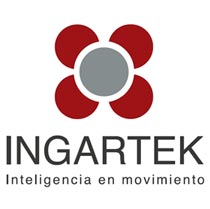
Customer service in transportation: a differentiating element
The “good” positioning in the markets of the different organizations, brands, companies, institutions… is closely linked to the attention they provide to the users and consumers of the products and services they offer.
A good product or service is no longer measured solely by its quality, the absence of problems over time, its useful life, the simplicity of its use, the creativity with which it has been generated, its cost or its multiple advantages with respect to the competence. In addition to all this, correct attention must be guaranteed to the person who acquires or hires it, and by “correct” is meant personalized, immediate, exclusive, friendly and above all decisive attention: we want that in case of any problem or incident, they attend to us with kindness, quickly, effectively, and to the extent possible (or impossible) that they agree with us.
Perception of the person
Kindness and effectiveness are subjective concepts, and therefore more difficult to measure. These are issues that depend to a large extent on the perception of the person who initiates the processing of the incident or complaint. Similarly, the organization that provides the service does not have a battery of “objective” indicators that are suitable for measuring kindness, so its management entails greater complexity.
However, the speed of the response is easily translated into a “measurable” indicator such as the time spent responding to an incident, problem or complaint. The progressive incorporation into our lives of different channels for communication, all of them “immediate” and “easy to use”, has caused a tide of sensations in the user, and the sensation that stands out among all of them is that of waiting for an answer ” already”.
This combination has meant a real revolution in customer service systems. The companies, institutions… bet in their strategic plans for an ambitious and demanding positioning of the areas that manage the attention to the users. High-level quality and satisfaction indicators are designed and defined, and the achievement of these objectives requires an integrated, agile, efficient and above all “fast” management system.
It is at this point where the integrated management tools fit in for each organization. Why integrated? Because it is evident that the time devoted to resolving incidents is directly proportional to the number of queries that have to be made, and the number of directories in which it has to be consulted. This is one of the keys: if I want to reduce the response time, I have to articulate the appropriate processes so that in a simple way, the person who deals with the incident has all the necessary data for its resolution.
But also, the management tool has to be designed “ad hoc”, because my problems as an organization have nothing to do with those of another organization. My customer service department has some peculiarities that no one else experiences; The staff that carry out their work in resolving incidents in my organization have acquired a series of “habits” that are difficult to redirect… Because we must not forget that a customer service department is just another “user” that needs personalized, immediate, exclusive and friendly attention.
Zendesk: Customer service management tool
At Ingartek we have been working with Helpdesk tools for managing customer service in the field of passenger transport for years. Specifically, the Zendesk tool is a customer service and interaction platform with omnichannel support. Zendesk allows you to implement on a single platform all the necessary requirements to provide adequate and efficient customer service. It offers a single communication interface with users, integrating the different channels (email, face-to-face, telephone, social networks, etc.). This makes it possible to reduce response times to incidents, which generates greater productivity in the customer service team, and allows more personalized and efficient attention.
Zendesk adapts to the particular needs of each organization, and its flexibility in design allows you to configure workflows according to existing specifications. The ad hoc design of the tool makes it possible to “reproduce” the workflows established in the care team, which avoids the rejection that a team can generate when faced with the unknown. The tool facilitates the work that the team has been doing, adjusting to its procedures and simplifying them, with which the willingness to use it improves significantly.
Queries to external web services can be designed from Zendesk, so that all the information necessary to manage an incident is integrated into the same platform. The connection to different databases allows importing and exporting data, minimizing the duplication generated in the registration of incidents.
Control in real time
Zendesk also allows you to design a dashboard where you can view the indicators that measure the quality of the care system in real time. Information is immediately available on the number of incidents generated, incidents resolved, resolution times, etc.
There are multiple advantages offered by this service monitoring, but especially it is a very valid tool for the correct sizing of the equipment. Any increase in the number of incidents is detected immediately, which makes it possible to adjust resources and thus maintain the level of attention, which undoubtedly results in greater satisfaction for all agents involved in the process (users and agents). of attention).
In summary, efficient management in customer service departments depends to a large extent on the facilities offered to the teams in charge of this work to achieve the proposed goals. Our experience in the development of Helpdesk tools, and the associated success stories, allows us to affirm that Zendesk is the tool that offers the necessary means to maximize efficiency in service, minimize response times, and ensure control of the helpdesk. command that offers organizations to improve their positioning in the market, through excellent management of customer service.
